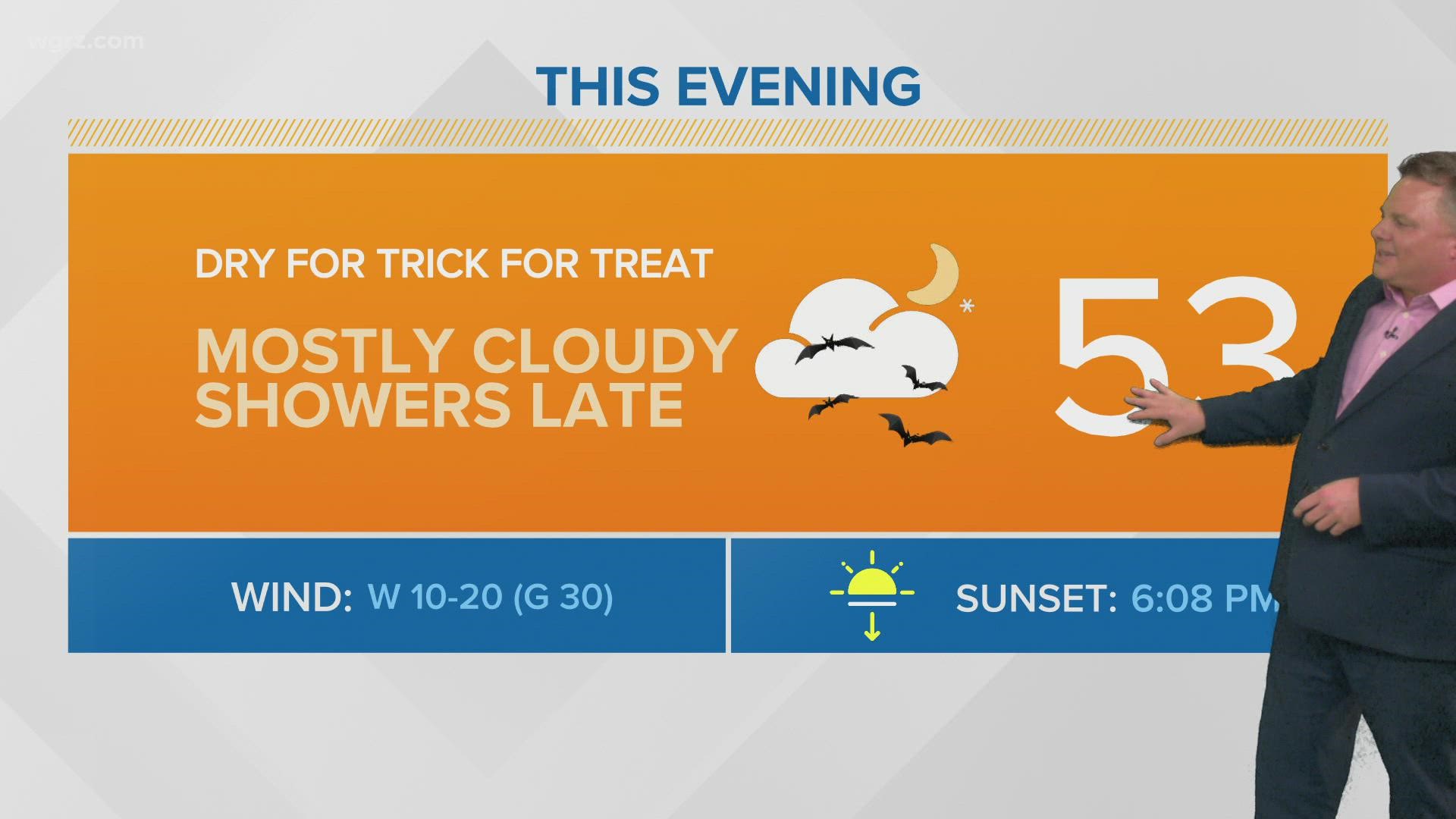BUFFALO, N.Y. — There's a chance to view the northern lights this weekend for parts of North America, but the weather could throw a wrench in viewing this fantastic light show.
A strong solar flare and coronal mass ejection (CME) erupted from the sun Thursday. And with the Earth's orientation and rotation around the sun, this CME is expected to reach and impact the northern hemisphere this weekend.
The Space Weather Prediction Center (SWPC) on Friday rated this event as a "G3" (strong) geomagnetic storm, meaning there could be potential implications on low orbit satellites, space craft, and communication systems around the North Pole on Saturday and Sunday.
The visible result of this CME though will be the aurora borealis, more commonly known as the northern lights. And since this is a particularly strong event, the extent of the northern lights is expected to dip farther south than usual.
The SWPC projects that portions of the Northeast, Upper Midwest and Washington State could be within range to see the northern lights Saturday and Sunday night. They would not be directly overhead, per say, but visible in the northern sky in the distance. Fantastic viewing is expected across Canada and Alaska.
However, the forecast could ruin the show for many... including us here in Buffalo and Western New York. We are starting to see a bit of clearing for Sunday night but the impact of the event will be dwindling by then as well.
To view the northern lights, you want to be in an area with minimal to no light pollution. Look north, a little above the horizon. It may take 20 minutes for your eyes to adjust to the darkness of the night sky, but in the distance you'll be able to see a faint green glow. That's the aurora borealis!
Note that the aurora borealis over Buffalo will not look like what you may see in photos from the Arctic Circle, columns of light dancing above your head. The influence of the earth's magnetic field weakens the closer you get to the equator, impacting how the Aurora would look elsewhere.
The aurora borealis is the visual result of electrons within the solar wind interacting with the Earth's magnetosphere and ionosphere.
The aurora forms 50 to 800 kilometers above the Earth's surface and is typically concentrated in the North and South poles. But when there's an increase in space weather activity associated with stronger solar storms, the Aurora can stretch away from polar regions.
The geomagnetic storms that produce the Northern Lights also impact the Earth in other ways, though the aurora is the most visual. Solar storms have the capability of impacting satellites, which could cause fluctuations in GPS monitoring, flight paths and power grids if precautions aren't taken before the storm.
It's important to note that these storms provide no physical threat to human life.
If you do happen to catch a glimpse of the Northern Lights here in WNY, be sure to share a picture with us. You can text them to us at 716-849-2200, #BeOn2 on social media, or share them through the NearMe tab on our WGRZ app.

